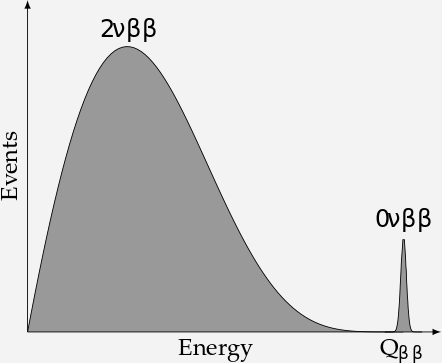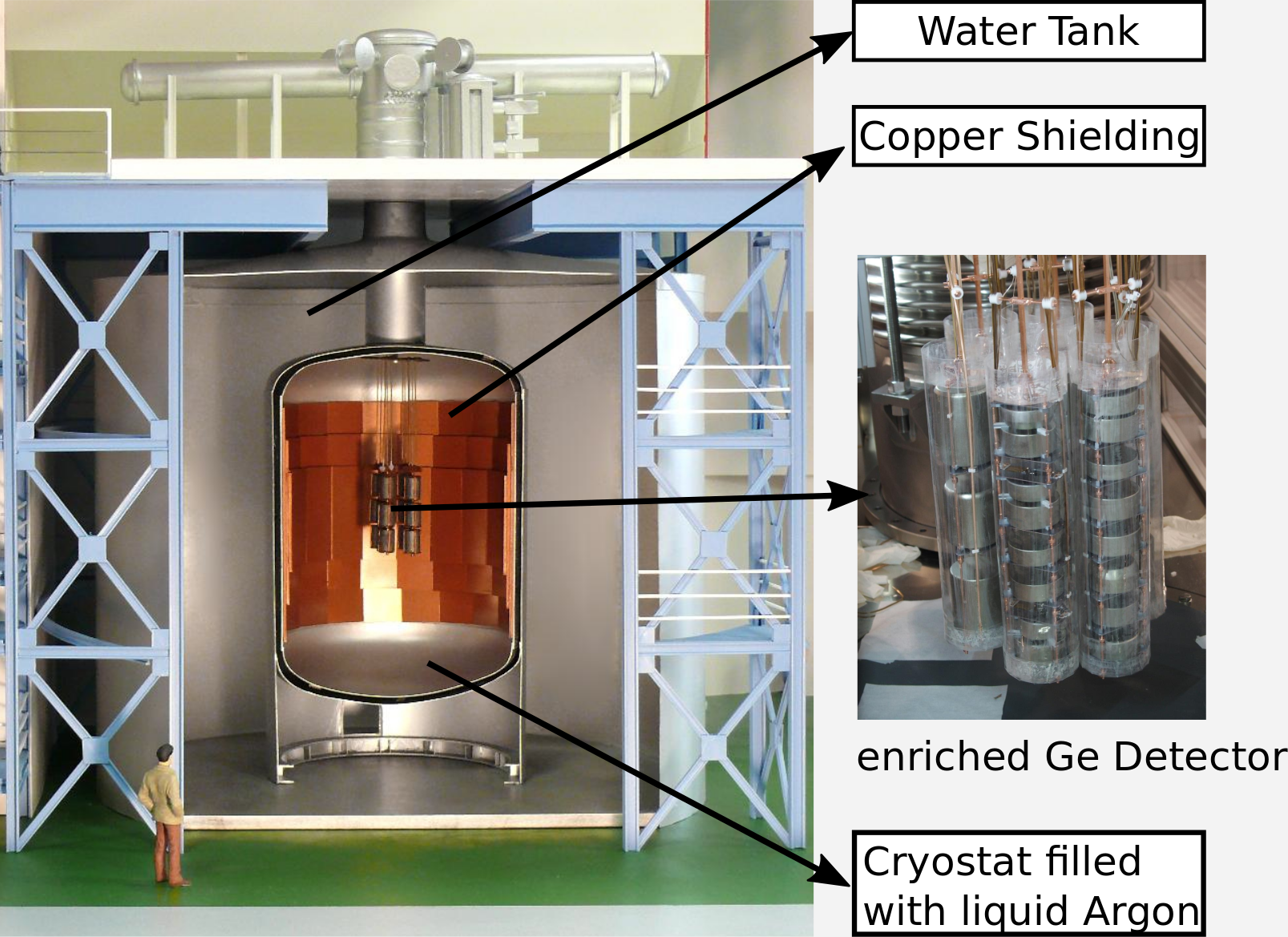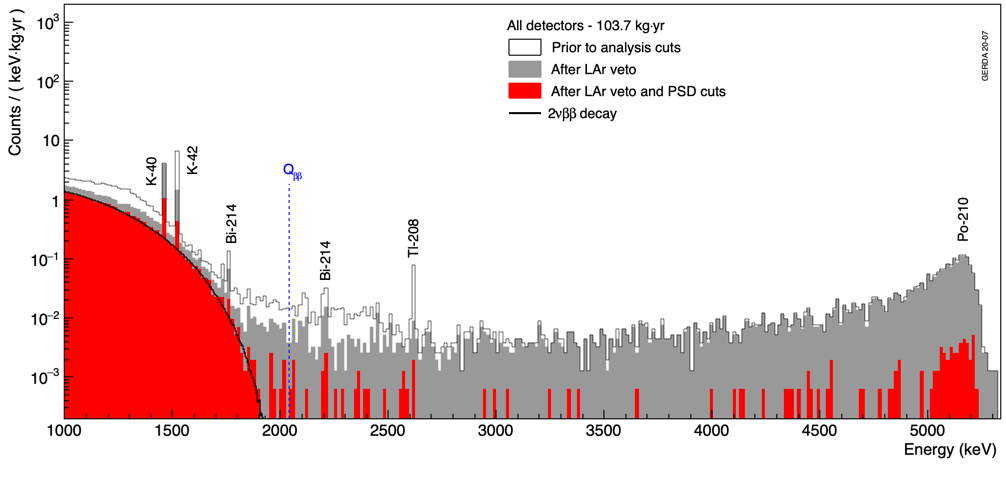Navigation auf uzh.ch
Navigation auf uzh.ch

GERmanium Detector Array (GERDA)
GERDAwas a low background experiment located at the LNGS laboratory in Italy designed for rare event searches, using high-purity germanium detectors. Its main goal was to detect neutrinoless double-beta decay (0νββ), a non-standard model process, whose discovery would shed light on the nature of the neutrino and its mass. The 0νββ decay would appear as a peak in the energy spectrum above the 2νββ spectrum, as illustrated in Fig.1. Furthermore, GERDA was and is also used for measurements of other rare processes, such as the standard model double beta decay (2νββ), searches for beyond standard model particle emissions and decays, or for dark matter interactions.
Our group was responsible for the calibration of the germanium detectors and was also involved in background modelling, the dark matter searches and exotic particle decay analyses, detector simulation, and data analysis.
The Detector
The GERDA setup is shown in Fig.2. At its heart, acting simultaneously as source and detector, were 7 strings of 3-8 enriched germanium diodes, These 41 detectors each weigh between 0.4 and 2.8 kg and add up to a total of 38 kg of active mass. Since 0νββ can only be potentially observed in 76Ge, which has only a 7.6% abundance in natural germanium, the detectors are isotopically enriched to about 87%. Applying a reverse bias voltage to the detectors, a current signal occurs if an ionising interaction happens inside the detector, e.g., from the two electrons emitted by a 0νββ decay within the detector, or background events such as external gamma rays.

The main challenge for the measurement was then to avoid all undesired backgrounds from external sources of radioactivity. Therefore, several layers of active and passive shielding surrounded the germanium detectors. 1.4 km of rock above the experimental facility reduced background events due to cosmic rays from ~1 000 000 to 1 per hour square meter. Additional plastic scintillator panels above the experiment detected and excluded the remaining few cosmic ray particles. A 10 m diameter water tank equipped with photosensors surrounded the experiment, acting as shielding and a veto for background events. Inside the water tank was the cryostat, a cylindrical 2 m diameter tank, passively shielded on the inside with pure copper, and filled with liquid argon. The argon fulfilled two tasks: It acted as a coolant for the detectors and, being a scintillating material, was equipped with photosensors inside the cryostat to detect and exclude events from particles crossing the cryostat. The remaining background originated from the holding structure and cables for the detectors and unavoidable impurities in the argon. A recorded spectrum with identified background sources is depicted in Fig.3.

Performance
The excellent energy resolution of the germanium detectors in addition to the stringent background reduction allowed GERDA to operate in the so-called ‘background-free’ regime, where its sensitivity to the 0νββ was only limited by its exposure. In its final data release in June 2020, GERDA Phase II has acquired an exposure of 103.7 kg yr, reaching a background rate of of 5.2*10-4 events per kg yr keV, and a world-leading sensitivity to the 0νββ decay half-life of 1.8*1026 yr assuming no signal.
Event rates in the region of interest around 2039 keV, where the 0νbb signal is expected, were consistent with background expectations. Thus, no significant signal from 0νββ decay was observed. By combining the data sets from GERDA Phase I and II, a limit on the 0νββ half-life in germanium of 1.8*1026 yr was set, which poses the most stringent result determined in any seminconductor experiment . The search continues with the next generation experimentLEGEND.